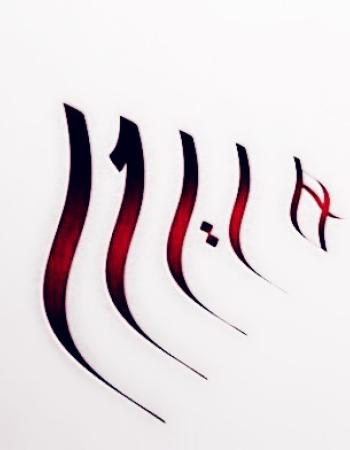343 DDS
King Saud University
College of Dentistry
Dept. of Maxillofacial Surgery & Diagnostic Sciences
Division of Oral & Maxillofacial Radiology
DDS 343- Oral and Maxillofacial Radiology
Course title: Oral & Maxillofacial Radiology II
Course No & Code: 342 MDS
Credit Hours: 4 h ( 1h lecture & 3h practicals)
Level: Third year
-------------------------------------------------------------------------------------------------------
This is the second course of oral radiology which is comprehensive course in radiographic interpretation and differential diagnosis of developmental, pathological lesions and fractures of the jaws and associated structures.
The course is covered by the lectures in the first half of the year and practical & tutorials in the second half.
The lectures in the first half will encourage the student to participate in tutorials of the second half.
Overall learning objectives:
By the end of this course students should be able to:
- Describe the advanced imaging modalities, their uses in the head and neck including CT, MRI, US and nuclear medicine.
- Know different types of infections and their clinical and radiographic features.
- Know different types of Odontogenic and non Odontogenic cysts and to describe the radiographic appearance of each one.
- Know the most common benign Odontogenic and non Odontogenic tumors. Know the most characteristic radiographic features of benign lesions.know the clinical and radiographic appearance of each one.
- Know different malignant lesions stressing on the clinical and radiographic features. Be able to request the advanced imaging to complete the differential diagnosis.
- Know different types of bone lesions that have jaw manifestations stressing on the clinical features and radiographic appearance.
- Identify and diagnose fractures of the jaws and facial bones, their clinical features and different imaging technique used for diagnosis.
- Know the systemic disease and some of syndromes that can be manifested in the jaws.
- Know TMJ anatomy, different radiographic technique used to examine TMJ.To know the radiographic appearance of the most common disorders affecting the TMJ.
- Know Maxillary sinus anatomy, different radiographic technique used to examine sinus.To know the radiographic appearance of the most common diseases affecting the maxillary sinus.
- Know salivary gland anatomy different radiographic technique used to examine salivary gland. To know the radiographic appearance of the most common diseases affecting them.
Content of the lectures:
Advanced imaging modalities: ch 12 pp 217 :
infections of jaw bones: ch 18 pp338:
Review of: Acute apical periodontitis, acute dentoalveolat abcess, chronic apical periodontitis, Periapical granulomas, Radicular cyst. clinical feature and radiographic apperance and differential diagnosis
Of : Sclerosing osteitis, osteomyelitis and osteoradionecrosis.
Odontogenic and non-odontogenic cysts :ch 19 pp355
Defintion , clinical & radiographic features
Odntogenic cyste: clinical features, radiographic appearance and differential diagnosis of Radicular cyst, residual cyst, Dentigerous cyst, Odontogenic keratocyst, lateral periodontal cyst.
Non-odontogenic cysts: clinical features, radiographic appearance and differential diagnosis of nasopalatine duct cyst (incisive canal cyst), nasolabial cyst(nasoalveolar cyst).
Cystlike lesions: clinical features, radiographic appearance and differential diagnosis of :simple bone cyst, developmental salivary gland defect(Stafne defect)pp598, Aneurysmal bone cyst pp 462.
Benign Odontogenic tumors :ch 20 pp378
Definition, clinical features,radiographic features( location, periphery & shape, internal structure, effects on surrounding structures).
Clinical features, radiographic appearance and differential diagnosis of: Ameloblastoma, Adenomatoid Odontogenic tumor(AOT), Calcifying Epithelial Odontogenic tumor( CEOT), odontoma, Ameolblastic fibroodontoma, Ameloblastic fibroma, Odontogenic Myxoma, Benign Cementoblastoma, central Odontogenic fibroma.
Benign non Odontogenic tumors :ch 20 pp 369
Hyperplastic lesion:
Clinical features, radiographic appearance and differential diagnosis of torus palatinus, torus mandibularis, enostoses, exostoses.
non Odontogenic tumors: clinical features, radiographic appearance and differential diagnosis of Neurilemoma( schwannoma), Neuroma, Neurofibroma, Osteoma, central hemangioma, arteriovenous defect, osteoblastoma, osteoid osteoma.
Malignant tumors ch 21 pp 420
Bone diseases with jaw manifestation, ch 22 pp 444
Facial fractures ch 27 pp574
Mandibular fractures,
mandibular condyle fractures ,
mid face fractures(lefort I, II, III)
zygomatic fractures
Systemic disease and common H & N syndromes ch 23 pp 472
Tempromadibular joint disorders and imaging ch 24 pp 493
Salivary gland diseases and imaging ch 29 pp 604
Review of anatomy,diagnostic imaging of S.G: intra oral & extra oral radiography(Periapical, occlusal, lateral oblique), sialography, CT, MRI, ultrasonography
Clinical features, radiographic appearance and differential diagnosis of obstructive &inflammatory disorders( sialolithiasis, sialadenitis,sialodochitits, Autoimmune sialadenitis(Sjogren’s syndrome), cystic lesions.
Pleomorphic adenoma, warthin’s tumor, Mucoepidermoid carcinoma
Maxillary sinus diseases and imaging, ch 25 pp 529
Review of normal development, anatomy, functions& diagnostic imaging.
Clinical features, radiographic appearance and differential diagnosis of inflammatory changes( thickened mucous membrane, sinusitis, Empyema, polyps)
Antroliths, mucous retention cyst, mucocele, Odontogenic cyst, benign neoplasm: osteoma, papilloma,ameloblastoma.
Malignant neoplasms squamous cell carcinoma.
Fibrous dysplasia.
Evaluation and Grades
First semester :
1st cont ass. Written 10 %
mid term exam written 20%
second semester:
2nd cont ass practical 10%
final exam practical & written 40%
practical & requirement: 20%
total 100%
Practical Requirements:
- 2 CMS radiographic taking only.
- 2 reports writing for 2 assigned cases.
- 1 panoramic radiographic taking + writing report.
Reference book: Differential Diagnosis of Oral Lesions (section on bony lesions) By: WOOD. GOAZ

